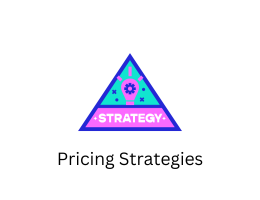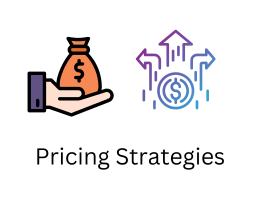
A/B Testing for Revenue Optimization: Best Practices and Case Studies.
- By admin --
- Sunday, 11 Jun, 2023
Introduction
In today's competitive business landscape, optimizing revenue is essential for the success and growth of any company. A powerful tool that can help achieve this goal is A/B testing. A/B testing allows businesses to compare two versions of a webpage, app, or marketing campaign to determine which one performs better in terms of generating revenue. By systematically testing different variations and analyzing the results, companies can make data-driven decisions to optimize their revenue streams. In this article, we will explore the best practices of A/B testing for revenue optimization and examine some case studies that highlight its effectiveness.
Best Practices for A/B Testing
-
Define clear goals: Before conducting an A/B test, it is crucial to define clear and specific goals. Are you aiming to increase conversions, average order value, or customer retention? By identifying your goals, you can design experiments that are focused on improving revenue-related metrics.
-
Start with a hypothesis: A hypothesis forms the basis of any A/B test. It is an educated guess about what variation will perform better and why. A hypothesis helps guide the test design and ensures that you are testing meaningful changes that align with your goals.
-
Test one element at a time: To obtain accurate and actionable results, it is important to isolate and test one element at a time. This could be a headline, call-to-action button, pricing, or layout. By changing one element at a time, you can determine its impact on revenue and avoid confounding variables.
-
Gather a large enough sample size: A statistically significant sample size is crucial for reliable A/B testing. A smaller sample size may lead to inconclusive results, while a larger sample size ensures a more accurate representation of your target audience. Utilize statistical calculators to determine the required sample size for your test.
-
Randomize and split traffic evenly: To ensure fairness and accuracy in A/B testing, it is essential to randomly assign users to different variations. Additionally, split the traffic evenly between the control and variant groups to prevent bias and obtain reliable results.
-
Allow sufficient testing duration: A/B tests require sufficient time to gather data and reach statistical significance. Depending on your traffic volume and conversion rates, it is recommended to run tests for at least one to two weeks. Avoid premature conclusions based on limited data.
-
Monitor secondary metrics: While revenue is the ultimate goal, it is important to monitor secondary metrics during A/B testing. For example, an increase in conversion rate may lead to a decrease in average order value. By tracking secondary metrics, you can identify potential trade-offs and make informed decisions.
-
Segment your audience: Not all users behave the same way. Segmenting your audience based on demographics, location, or behavior can provide valuable insights. Conduct A/B tests within specific segments to uncover revenue optimization opportunities tailored to different customer groups.
Case Studies
1. E-commerce Checkout Optimization:
An online retailer wanted to optimize their checkout process to increase revenue. They hypothesized that reducing the number of form fields in the checkout process would streamline the experience and boost conversions. In an A/B test, they compared the original checkout form with a simplified version that had fewer fields. The simplified version resulted in a 20% increase in completed purchases, leading to a significant boost in revenue.
2. Pricing Experimentation:
A software-as-a-service (SaaS) company wanted to determine the optimal price point for their subscription plans. They conducted an A/B test where one group of users saw the original pricing structure, while another group saw a modified pricing structure with reduced prices. The test revealed that the modified pricing structure led to a 15% increase in sign-ups, ultimately driving higher revenue despite the lower prices.
3. Email Campaign Optimization:
A marketing team wanted to increase the revenue generated from their email campaigns. They tested two different subject lines for their promotional emails: one emphasizing a discount and the other highlighting limited availability. The test revealed that the subject line emphasizing limited availability resulted in a 30% higher open rate and a 25% increase in click-through rate, ultimately driving more revenue from the campaign.
Conclusion
A/B testing is a powerful technique for revenue optimization. By following best practices such as defining clear goals, formulating hypotheses, testing one element at a time, and ensuring sufficient sample sizes, businesses can make data-driven decisions to improve their revenue streams. The case studies mentioned demonstrate the effectiveness of A/B testing in various scenarios, ranging from checkout optimization to pricing experimentation and email campaign optimization. Incorporating A/B testing into your revenue optimization strategy can lead to significant improvements in your business's financial performance and overall success.





